Guide to Loch Lomond and the Trossachs, including facts, history, things to do, where to stay and eat, the best walks in the national park and where to wild camp.
Loch Lomond and the Trossachs is one of two national parks in Scotland. It covers an area of 720 square miles (1,865 square km) and comprises forest, lochs, mountains, rivers and hills.
More than 15,000 people live in the national park and over half of Scotland's population are based less than an hour's drive away. Accessible, diverse and packed with wildlife, Loch Lomond and the Trossachs is the perfect place to spend a weekend hiking or a relaxing holiday with the family.

History and facts
Loch Lomond and the Trossachs National Park was established on 8 July 2002 and became operational on 19 July 2002. Five days later, on 24 July, the park was formally opened by Anne, Princess Royal.
The national park is known for its beautiful lochs and imposing mountains – there are 21 Munros (mountains over 3000ft/914m) and 19 Corbetts (2,500ft-3,000ft/762m-914m).
Loch Lomond is the largest waterbody in the park, stretching 5 miles (8km) across at its widest point and 24 miles (39km) long. It has the largest surface area of any Scottish loch and is 190m deep and its deepest point.
Things to do
Paddle steamers, Balloch and Loch Katrine
Balloch is home to the Maid of the Loch, the last paddle steamer to be built in Britain. She sits on the bank, offering tea and fascinating tours by volunteers. Funding allowing, she’ll be made loch-worthy this year. Paddle steamer Sir Walter Scott (above) already crosses Loch Katrine. 01877 376315, lochkatrine.com
Loch Lomond Shores, Balloch
The former Argyll factory – an elegant celebration of art nouveau – is now home to retail outlets, eateries and a farmers’ market every second Sunday. lochlomondshores.com
Water Bus and Cruises
Sweeney’s Cruises run from Balloch and Cruise Loch Lomond from almost everywhere else (01301 702356, cruiselochlomond.co.uk). Both offer on-board bars, commentary and indoor seating.
Walks
Loch Lomond and the Trossachs National Park in boasts steep mountain peaks, overlooking rolling hills, untamed forests and glistening lakes. Explore the park on foot with five of our favourite walks.
Glen Ogle, Stirlingshire
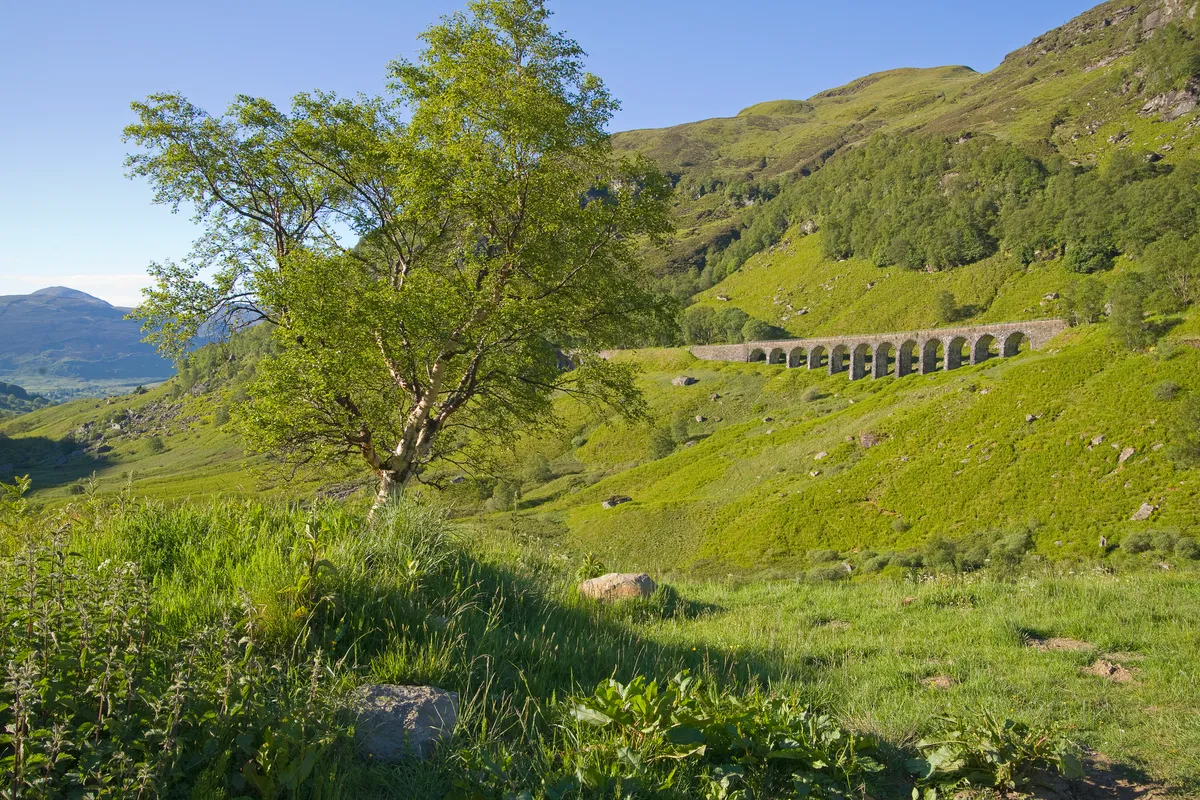
A classic highland circuit walk through beautiful Glen Ogle – 7 miles. Route and map.
Conic Hill, Stirlingshire
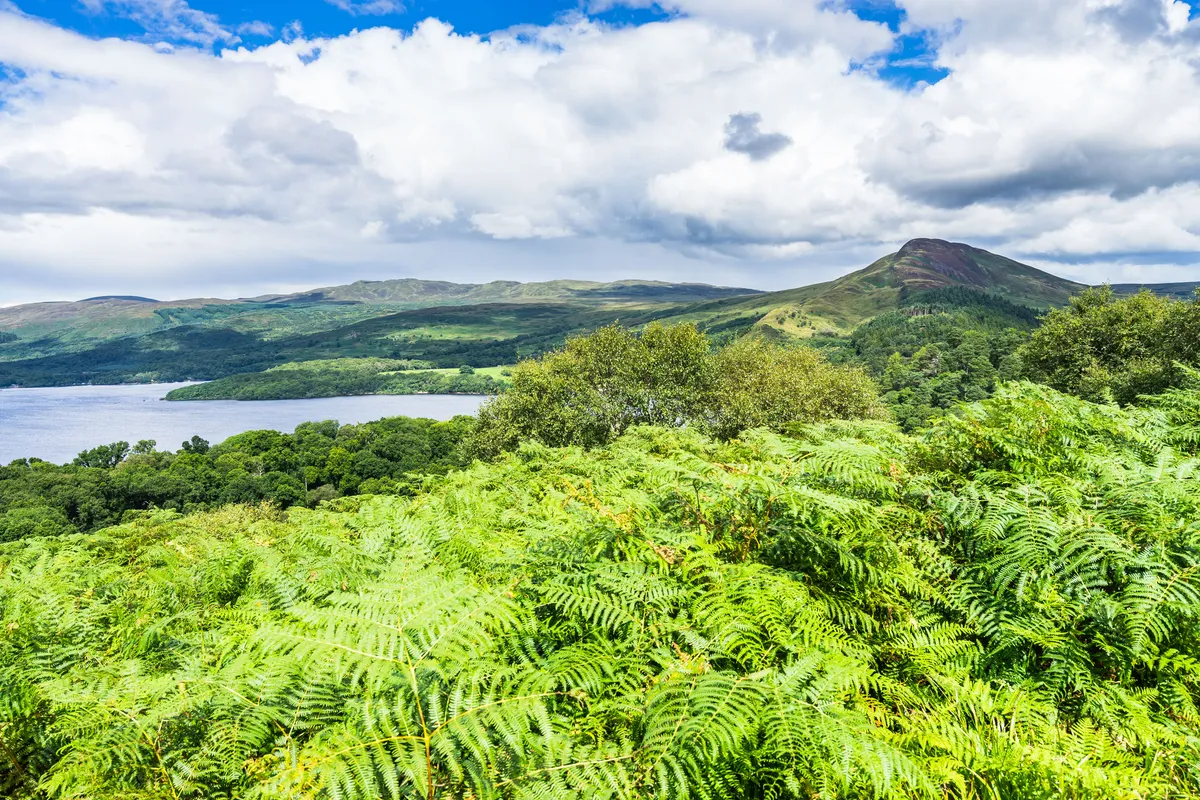
Climb an iconic Scottish hill, pausing for a picnic at the summit with views across Loch Lomond – 6.5 miles. Route and map.
Loch Ard Forest, Stirlingshire
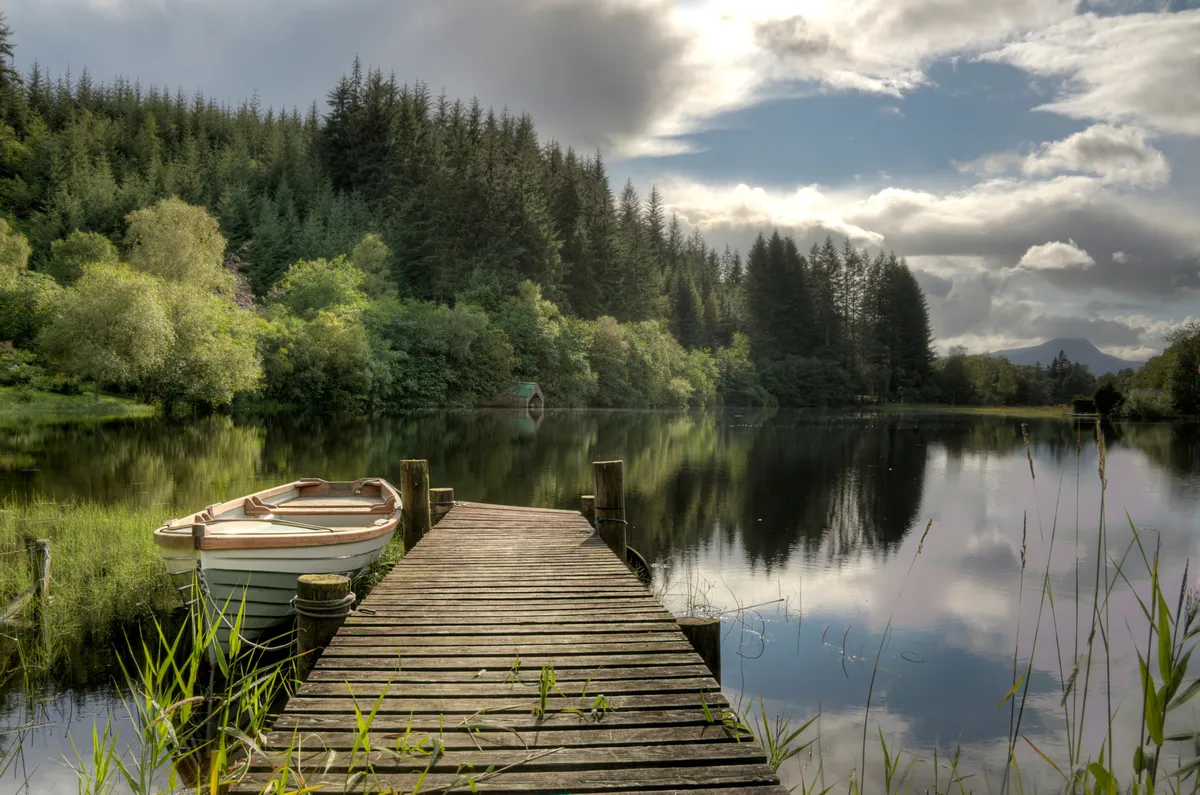
Prepare to have your senses heightened on this engaging sculpture trail through stands of towering conifers and alongside a mesmeric loch shore – 3.5 miles. Route and map.
Loch Katrine, Stirlingshire
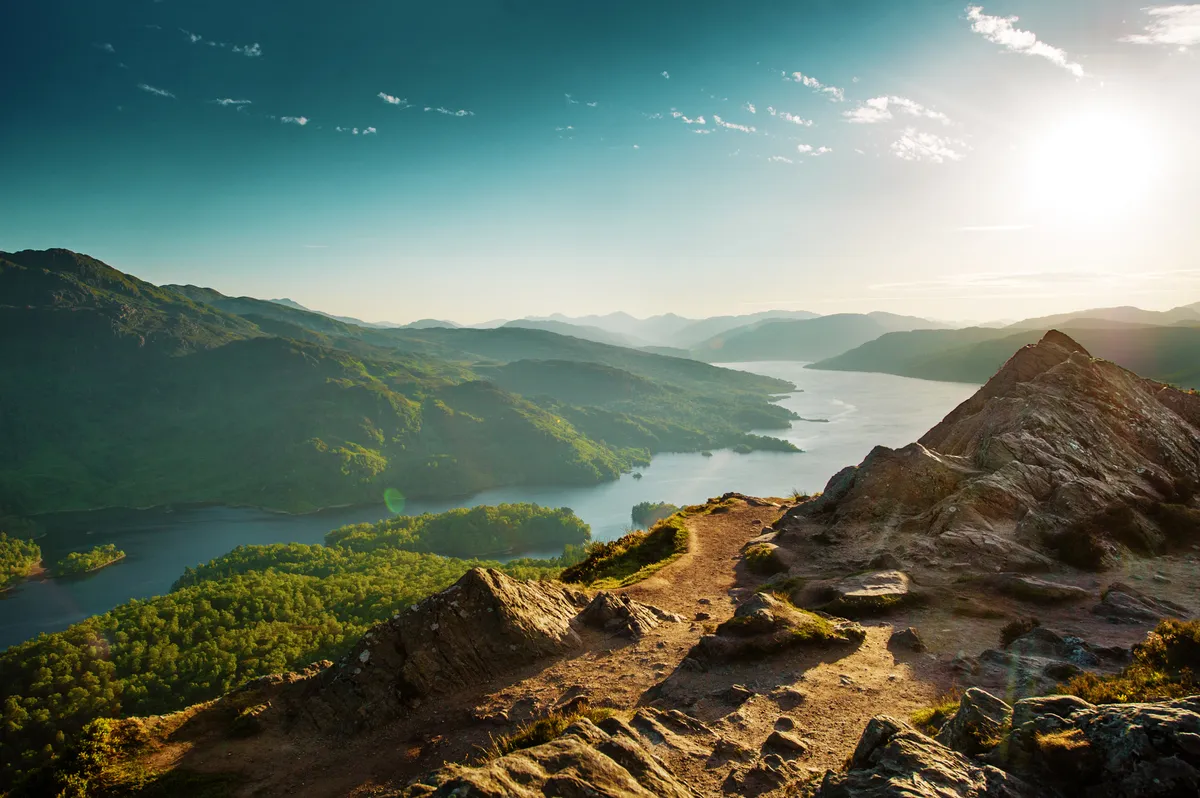
Enjoy a tranquil five-mile stroll around a Scottish loch in the beautiful Loch Lomond and the Trossachs National Park – 5.2 miles. Route and map.
Ben Lomond, Argyll and Bute
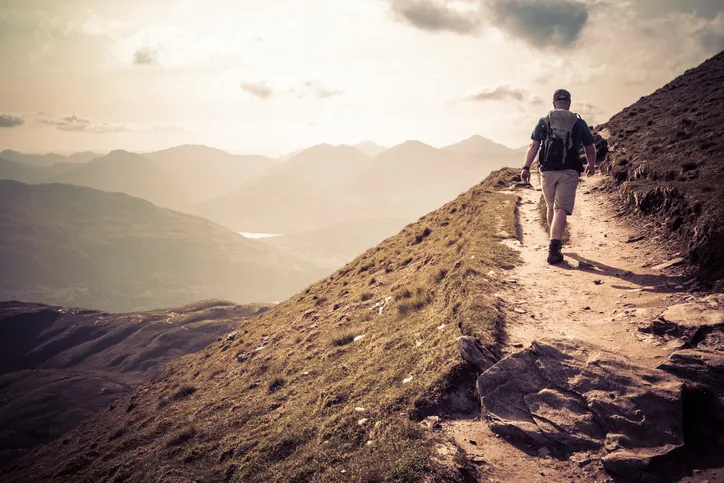
Ben Lomond is the most climbed of the Scottish Munros, with a direct ascent of 974m to its summit. Climb north up the tourist path from Rowardennan, then either retrace your ascent route or take the rougher return along Ptarmigan Ridge to the west – 7.6 miles. Route and map.
Places to stay
Lomond Woods Holiday Park
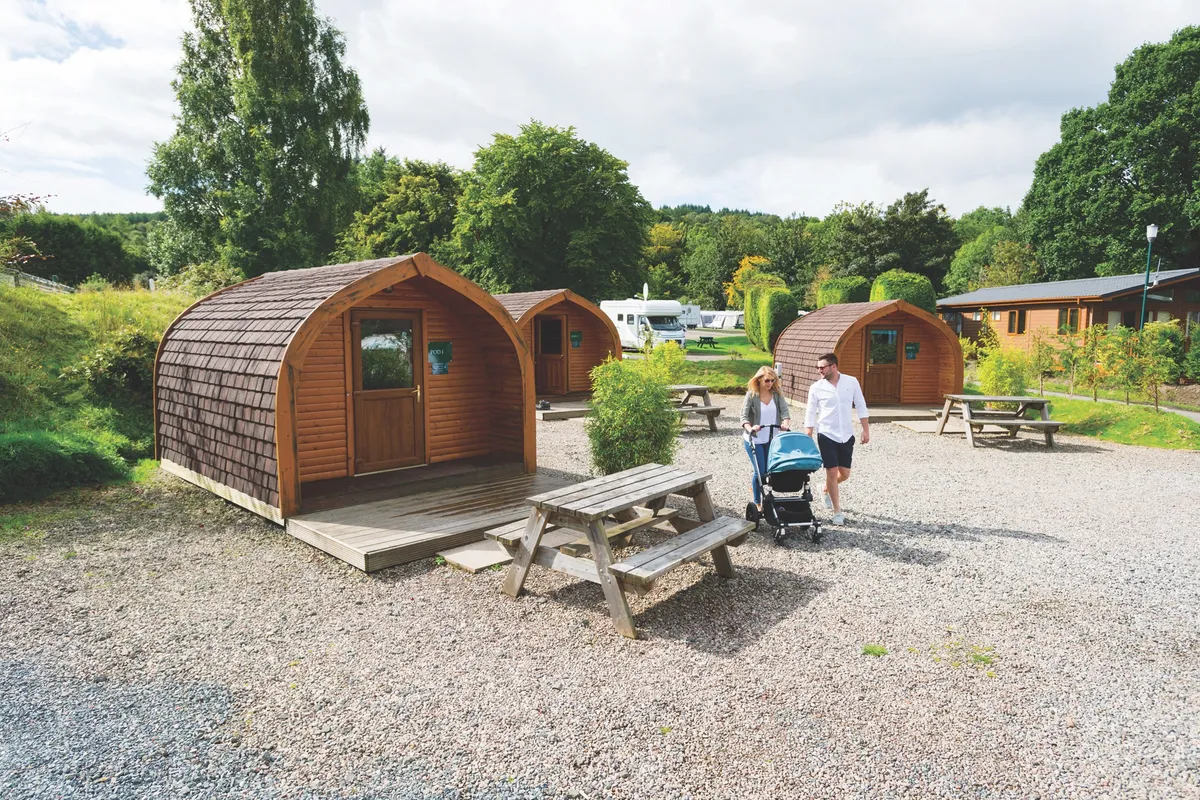
With trees as a feature and a range of accommodation, from camping and timber glamping pods to luxury lodges, this site offers a comfortable compromise between nature and decadence; from £70 a night for a four-person glamping pod. woodleisure.co.uk
Kip in the Kirk, Drymen

This converted church is a characterful treat, retaining some original features, such as the stained-glass windows. Largely a bunkhouse aimed at walkers, it also has some private rooms. A friendly welcome, fresh-baked scones and tea for every guest; from £30pp in a bunk room. 07734 394315, kipinthekirk.co.uk
The Oak Tree Inn, Balmaha

The Fraser family has played a big role in making Balmaha bijou by investing in the community and creating local jobs. There are rooms above the inn plus a range of comfortable cottages built from local stone and slate. Comfort guaranteed; from £110 for a standard room. 01360 870357, theoaktreeinn.co.uk
Camping
Immervoulin Campsite, Strathyre
The site’s main charm is its location on the banks of the River Balvag adjoining the SSSI Roinn Mhor wildflower meadow protruding into Loch Lubnaig.
01877 384285 caravanandcamping-uk.com
Camping and Caravanning Club Site, Millarochy Bay
It’s hard to imagine a warmer welcome from friendlier staff. Backpackers get a discount, their own thoughtfully provided facilities and a pitch by a grove of flowers. The site adjoins a wide shingle bay.
01360 870236 campingandcaravanningclub.co.uk
Benglais Farm, Inverarnan
This classic family-run friendly farm campsite has the added bonus of a pub and café on site and is in a pleasant River Falloch location.
01301 704281 beinglascampsite.co.uk/
Inchcailloch
This public campsite is in pedunculate oak woodland on a Loch Lomond island. Former hermitage of St Kentigerna, it’s now owned and managed by the national park. As a nature reserve, a compost toilet is its only facility.
01389 722021 lochlomond-trossachs.org/camping
Camping – permit sites
If you’ve never tried wild-camping, with a visit and advice from a ranger, beautifully selected permit sites offer a great first step. Ring the national park for advice about one that suits you – whether you’re after somewhere to fish, to walk, to be alone or with others, or near facilities. As with wild-camping you must bring your own food, water and firewood, leave no rubbish and dig your own toilet site 30m from water. 01389 722021 www.lochlomond-trossachs.org/camping
Three Lochs Forest Drive G, Loch Drunkie
Steeped in watery serenity, Loch Drunkie is situated in Forestry Commission land on the Three Lochs Forest Drive, so is also accessible to motorists and cyclists.
Lochan Maoil Dhuinne, Rowardennan
I left a piece of my heart somewhere here, on the rocks or on the pebble beach where I pitched my tent, or under the pines, or maybe even in the loch. A secluded paradise on the east bank of Loch Lomond, in an otherwise busy spot.
Wild camping in the park
Wild camping recently became subject to regulation in 4% of the park between March and September. In these areas, camping is banned except for in allocated sites, for which permits are required. The byelaws have been controversial, especially on social media. Ranger Suzanne Humpris counters: “I’m a fourth-generation MacDonald. My grandpa would take my Dad out camping and fishing for weeks, so our Scottish access laws are really important to me. But we had no choice. Even if everyone behaved well, vulnerable areas just can’t cope with huge numbers of people. And not everyone was behaving well. There were burnt-out cars, broken glass. Now the laws have got teeth to them, things have improved hugely.”
The fine for failing to comply with the byelaws is £500, but a permit for a tent for up to four people costs only £3.
Call 01389 722021 for permits and advice, or see lochlomond-trossachs.org.
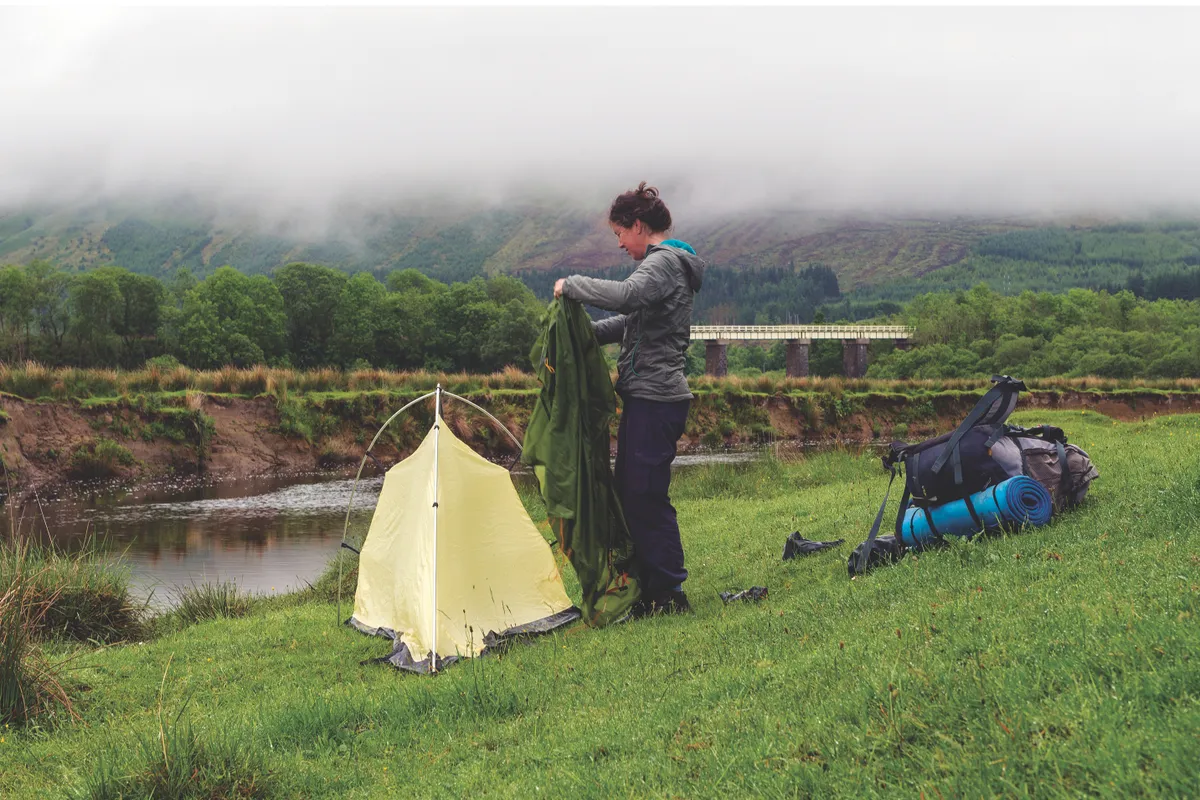
Wild camping is still permitted in 96% of the national park throughout the year, and 100% of the Park from October to March. The Scottish Access Code says ‘wild camping’ is lightweight, done in small numbers, and only for two or three nights in any one place. Avoid camping in enclosed fields, keep away from buildings, roads or historic structures.
River Dochart, Crianlarich
On the West Highland Way, the railway, the A85 and the A82, little Crianlarich has a range of accommodation for travellers. But the breezy bank of the River Dochart with stunning views of Ben More and Stob Binnein is a lovely spot for wild camping.
Ben A’an, Brig O’Turk
Even in byelaw zones you never have to go far to find somewhere legal to camp. Usually you just need to be a short distance from the road or be prepare to climb a little higher. Ben A’an is a great climb with cracking views.
Places to eat
Cherry Tree Café, between Inversnaid and Rowardennan

You won’t find a website for the Cherry Tree Café. Seven miles from the nearest B-road, it’s a tiny cabin and accessible only to walkers on the West Highland Way, on land belonging to Elaina and Craig. Try the homemade oat cookies, tablet and granola bars.
St Mocha Coffee Shop, Balmaha
Mocha honestly never tasted so good. This little café sells artisan coffee and tea, ice cream using milk from local cows and freshly baked cakes. The Loch Lomond Coffee Co also roasts its beans here; open daily from 10am. theoaktreeinn.co.uk
Drovers Inn, Inverarnan
Deservedly famous, the staff T-shirts (worn with kilts) say it all: ‘Scottish Pub of the Year, 1705’. This 18th-century inn – its walls blackened and thick – is steeped in character and stuffed with taxidermy victims. 01301 704234, droversinn.co.uk
The Byre Inn, Brig O’ Turk
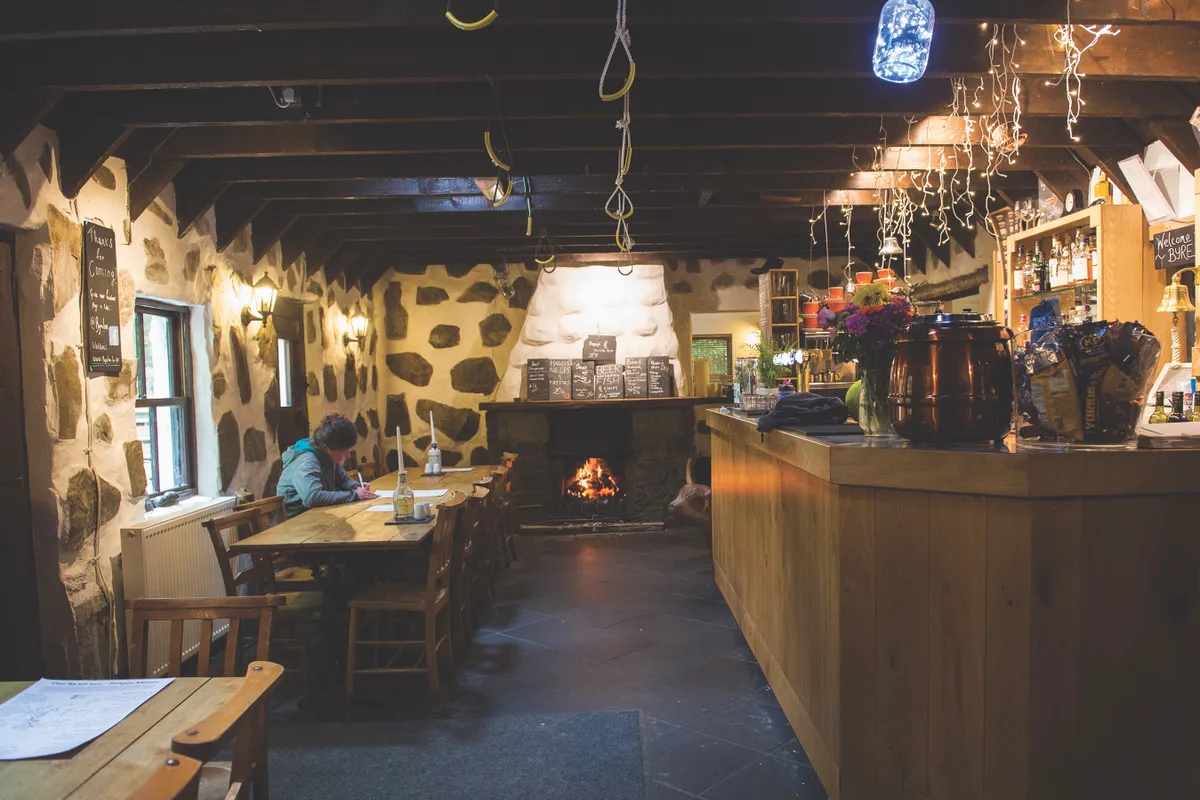
A characterful and quirky thick-stone-walled little pub by the Black Water River (above). Enjoy homemade food, such as casserole with local venison, sausages from the farm next door, or hearty falafel burgers. Watch for staff trying to break the pub record for monkey-swinging across the ceiling (five seconds). 01877 376292, byreinn.co.uk
Mhor 84, Balquhidder
A restaurant and motel offering good-quality food in a stylishly understated but comfortable setting. 01877 384646, mhor84.net
Dealing with Midges
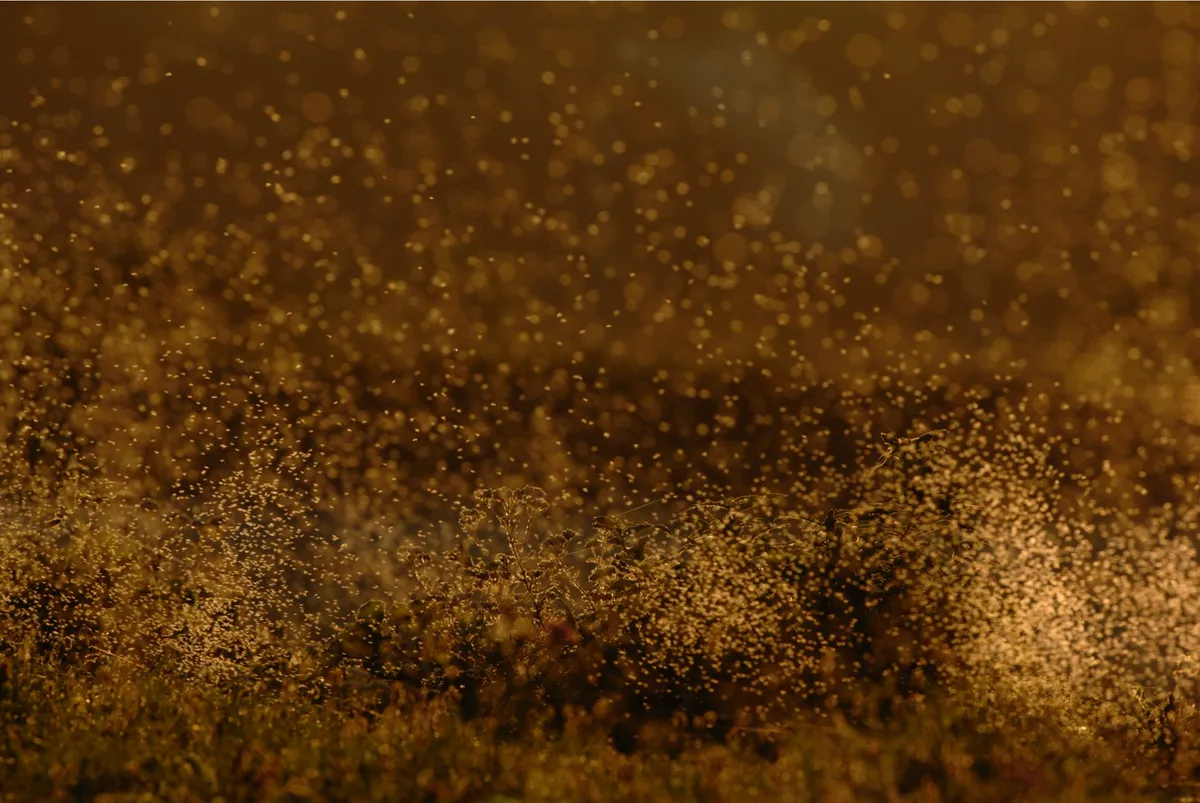
Head nets are available cheaply from outdoor shops. Tests show people react differently to different repellents – there’s no common solution. I use a spritz made from bog-myrtle and citronella essential oils to begin, Avon Skin So Soft Bug Guard when they get bad, plus my net when they’re ferocious. At their worst between June and August, avoid them if you can. Midges can’t deal with heatwaves, a breeze of over 8kmph or campfire smoke.
How to get there
The Caledonian Sleeper departs every evening from London and propels you gently to Scotland through a nightscape of soft whistles and white sheets. There’s no dreamier way to arrive in a new land in a new day; London to Glasgow in a twin room, from £170 return. 0330 060 0500; sleeper.scot
A walk in the park, by Julie Brominicks
In 2019, outdoors writer Julie Brominicks took to the park on foot, encountering friendly locals, wild landscapes and nature in abundance. Here is her account of the journey.
Dusk. Straining our eyes across the water one last time, we see a sandpiper step calmly in front of our tent. We see its creamy plumage and the almost-blue-white of its wing-stripe before it takes off, leaving just the echo of its whistle and whirr of its flight. We are looking for beavers, kind of, while not expecting to see any, or minding that we don’t.
This is our third night in Loch Lomond and the Trossachs National Park. My husband Rob is with me for the first part of my hike, which links five walking trails and a diversity of landscape. Behind us are Helensburgh, busy Balloch, and quiet hedged lanes with glimpses of roe deer and curlews. Behind us too is convivial Drymen.
And Aberfoyle, where flowers spilled over garden walls and we’d eaten tattie scones in The Scottish Wool Centre, which I was mildly disappointed to discover was shop not museum, where knitwear lurked sheepishly among scented candles. It took a spirited old lady to alert me to its charms. “I’m not waiting for them!” she’d gleefully cackled, indicating her coach party. “I like to explore on me own!” Hooting into her tea she cried: “We’re frae Glasgow. We go all over. I’m enjoying mesel’!”
The national park is within an hour’s drive of half the population of Scotland, and sometimes it seems like everyone’s here at once. But there’s plenty of room. Mostly I see people, usually Glaswegians, discreetly camped under tarps with tinnies cooling in a burn, or casting fishing lines at dawn. “Hiya pal! Ye camping?” becomes a familiar greeting. Sometimes we see no one at all.
Tonight, Loch Drunkie is all ours. In it are reflections of trees. Broadleaf belts the water’s edge, conifers crown the hills. Two moorhen chicks swim back and forth across it, their size tiny, their journey audacious.

Next morning, shrieks shatter the peace: a Duke of Edinburgh group, tracked by a teacher picking up sweet wrappers. “They’ll get a rollicking later,” he grumps. “At least they’re happy,” I say. “Aye,” he brightens, “it’s the first time in a forest for some of them. But we’ll see tonight, when they’ve climbed that ridge. It’s the same every year – they’ll be crying and snotting, then next week in school they’ll be asking to come again.”
Living breathing forest
We head circuitously to Ben A’an around Loch Achray. On account of its craggy drama, Ben A’an is a popular climb, but come evening we’re the only ones here, save for ravens, and a vole running rings round our tent. The view is spectacular but it’s the forest beneath us – green, expansive, tapestried – that snatches our hearts. It seems to breathe. At dawn, it quivers and swells as birdsong rises to greet us.
The National Park Authority provides education and agency to the community and its several landowners. All appear broadly on board with the plan to regenerate over-grazed or plantation-impoverished land. We’re looking at part of the Great Trossachs Forest National Nature Reserve, which in 200 years will consist of 160 square miles of native woodland. Elsewhere too, whether dark and duff-floored, or lively in leaf-light, much of my route is arboreal.
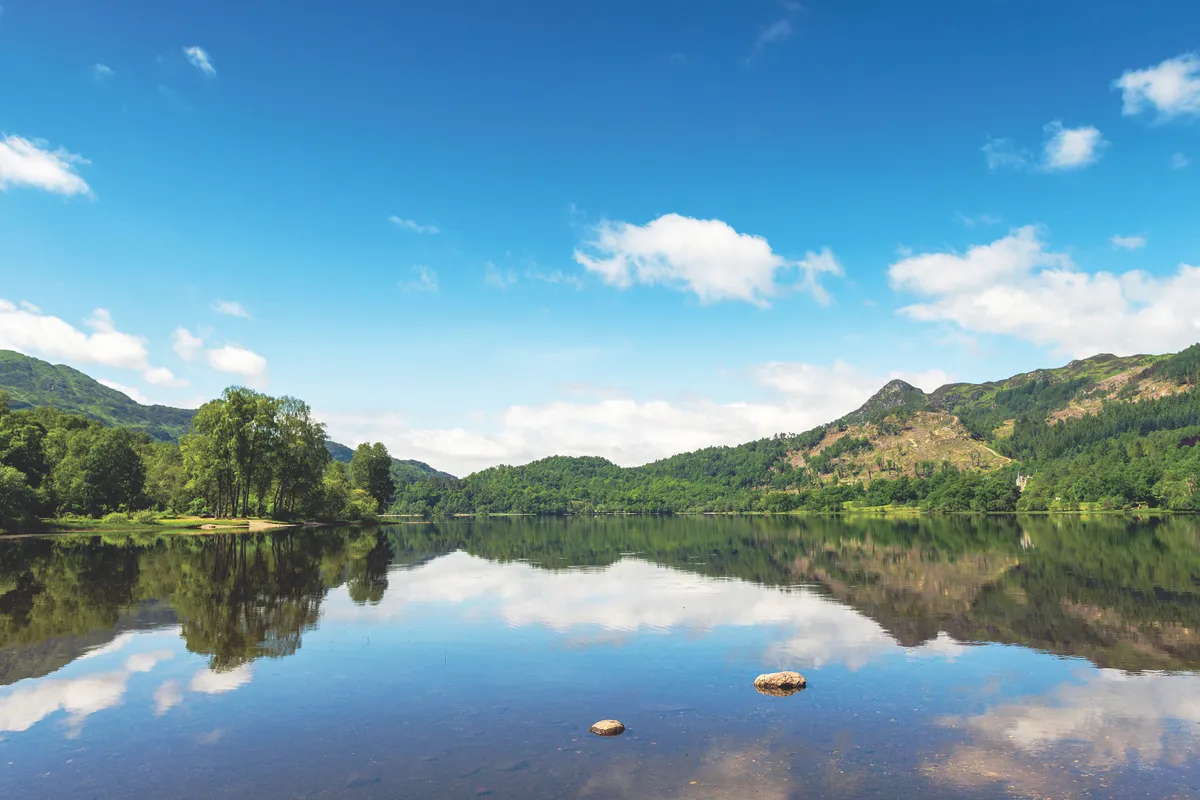
We walk to Callander above Loch Venachar, through mixed woodland pasture which gives way to ebullient gorse. Callander, with its accessible river bank and tearooms, is a Victorian tourist town but also has a Roman camp, a glacial esker and is close to the Highland Boundary Fault, where two continents collided.
Past river, up glen, down valley
Next day, we cross the fault as it passes beneath the Falls of Leny. North of here is acidic rock and the highlands, where according to the season, people herded cattle between summit and valley. South is limestone, underpinning fertile land and settled agriculture. The Garbh Uisge river is indiscriminate. It bubbles round rocks, which give respite to goosanders and dippers. Loch Lubnaig is diaphanous and blue. Alerted by a large splash, we watch a pair of ospreys twist and cavort with huge, graceful flight about an islet, and at the edge of a heron-stalked water-meadow of marigolds, bugle, yarrow and sorrel we await their return.

When Rob leaves by bus, I continue through the Strathyre Forest and west up leafy Balquhidder Glen. The sky grows black and storm-light races over Loch Voil before the sun returns at Loch Doine. The valley narrows, mountains reach up and away. Trees recede. I pitch my tent on the sheep-pastured bank of the Larig. I love the bleak beauty that comes with moory landscape like this. But, for days my walk’s been accompanied by an orchestra of warbles and chirrups. Now only a cuckoo calls, and just a few sprays of tormentil hunker in the nibbled sward.
At 3.45am, I set up my stove on the river pebbles. Blue twig-smoke mingles with grainy light as my oatcakes sizzle and coffee brews. An hour later, I reach the foot of Stob Binnein. As I climb, a breeze blows. Loch Doine and Loch Voil, veiled in silver, appear and then vanish. The sun bathes a parallel ridge in cinematic light and daubs a meadow pipit with gold. I hear but don’t see grouse in the tussocks. High above glens, lochs and forest, I see only layers and waves of blue-grey and purple mountains. Cloud spirals around the summit. Snowfields are crusted and dusted with bits of yellow grass. In the valley between the two peaks, I watch red deer far below, etched on the ground like cave paintings. Ben More when I reach it, is busy, the descent to Crianlarich sweltering. I camp on the banks of the Dochart watching sand martins, with mountains on my mind.
I walked the West Highland Way in 2004, so the rest of my trek is familiar, with two significant changes: more trees, less rubbish. Saplings creep towards the bouldery uplands. After an easy day to Inverarnan and another early start, I mistake my first glimpse of Loch Lomond for a continuity of bluebells. The path, a suffusion of birdsong and shade and a barrage of boulders, stone steps and crevices, follows the water. I meet wild goats on a footbridge. Moss and blaeberry grow between ancient oaks, bog myrtle covers damp ground. The shore is scalloped with little shingle beaches.
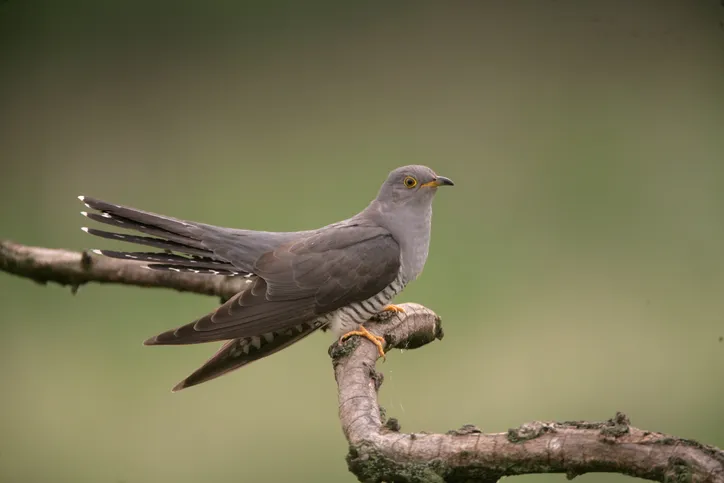
I put aside a day to climb Ben Lomond and thus camp for two nights at Lochan Maoil Dhuinne, one of the National Park permit sites. It’s a sizzling bank holiday weekend and my binoculars reveal heat-wobbled people and cars down the entire west shore of the loch, but until 9pm when I’m joined by three exhausted West Highland Way walkers, I have this small headland to myself. Pebble beaches, Scots pines and heather, gorse and sedum-clad rocks – paradise. I swim. The water is clear and amber. Time warps. I see the sun set and the moon rise. My short walk through the national park barely scratches its surface, but it’s definitely got under my skin. At 6.30am, a powerboat rips up the loch playing Highway to Hell at full volume, sending a large wake to wallop the shore, which takes, oh, minutes to subside. In truth, the traffic on the A82 across the water is a more persistent drone.
Ranger Jim Downie walks with me for a couple of hours. He tells me that less pressure on vulnerable areas has allowed for regeneration. Water voles are thriving since being reintroduced, and pine martens, too, which is good news for threatened red squirrels. “Greys live in higher densities, they’re easy prey – not as nimble as reds,” says Jim. “A pine marten won’t take on a big muckle male mind you, but even when not predating they’re displacing.”
Beavers too are furtively returning. “In general, it’s all really positive,” says Jim. “If you get the forest right you get everything else right. The wildlife is here. But you need to be out in the gloaming to see it. This idea of rocking up at 3pm in your flip-flops asking to see a red squirrel…” he shakes his head. “It’s not going to happen.”
I see a red squirrel early next morning in Balmaha Woods, hurtling head first down a spruce. I remember Balmaha in 2004, the broken glass and needles in the public toilets. Now it has leafy public gardens and the harbour is serene. A few fishermen are wading out, or eating sandwiches in kayaks.
I sleep at the Oak Tree Inn and sink into a luxurious big white bed. But something is wrong with my ears. They’re ringing. It takes me a while to realise that after so long outdoors it’s the absence of sound I’m hearing – no birdsong, shore-lap or breeze.
So on my last day, I take a boat and my tent to Inchcailloch Island. At dusk, a tawny owl watches me with liquid-black eyes. I wake to a white mist. Geese-honk is muted, pebbles at my feet enhanced and shining. Land, air and water have dissolved. A fish jumps, apparently leaving ripples in the sky.

